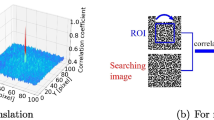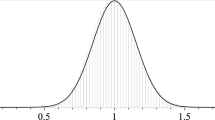Abstract
A novel approach for essential matrix estimation is presented, this being a key task in stereo vision processing. We estimate the essential matrix from point correspondences between a stereo image pair, assuming that the internal camera parameters are known. The set of essential matrices forms a smooth manifold, and a suitable cost function can be defined on this manifold such that its minimum is the desired essential matrix. We seek a computationally efficient optimization scheme towards meeting the demands of on-line processing of video images. Our work extends and improves the earlier research by Ma et al., who proposed an intrinsic Riemannian Newton method for essential matrix computations. In contrast to Ma et al., we propose three Gauss-Newton type algorithms that have improved convergence properties and reduced computational cost. The first one is based on a novel intrinsic Newton method, using the normal Riemannian metric on the manifold consisting of all essential matrices. The other two methods are Newton-like methods, that are more efficient from a numerical point of view. Local quadratic convergence of the algorithms is shown, based on a careful analysis of the underlying geometry of the problem.
Similar content being viewed by others
References
Hartley, R. and Zisserman, A. 2003. Multiple View Geometry, 2nd edition. Cambridge: Cambridge University Press.
Helmke, U., Hüper, K., Lee, P.Y., and Moore, J.B. 2004. Essential matrix estimation via Newton-type methods. In Proceedings of the MTNS, Leuven.
Helmke, U. and Moore, J.B. 1994. Optimization and Dynamical Systems. London: CCES. Springer.
Horn, B. 1990. Relative orientation. International Journal of Computer Vision, 4(1):59–78.
Huang, T.S. and Faugeras, O.D. 1989. Some properties of the E matrix in two-view motion estimation. IEEE Transactions on Pattern Analysis and Machine Inteligence, 11(12):1310–1312.
Huang, T.S. and Netravali, A.N. 1994. Motion and structure from feature correspondence: A review. Proceedings of the IEEE, 82(2):252–268.
Lang, S. 1999. Fundamentals of Differential Geometry. New York: Springer.
Longuet-Higgins, H. 1981. A computer algorithm for reconstructing a scene from projections. Nature, 293:133–135.
Ma, Y., Košecká, J., and Sastry, S. 2001. Optimization criteria and geometric algorithms for motion and structure estimation. International Journal of Computer Vision, 44(3):219–249.
Mahony, R. 1994. Optimization Algorithms on Homogeneous Spaces. PhD thesis, Australian National University, Canberra.
Smith, S.T. 1994. Optimization techniques on Riemannian manifolds. In Hamiltonian and Gradient Flows, Algorithms and Control, A. Bloch (ed.), Fields institute communications, pp. 113–136. American Math. Soc., Providence.
Soatto, S., Frezza, R., and Perona, P. 1996. Motion estimation via dynamic vision. IEEE Transactions on Automatic Control, 41(3):393–413.
Author information
Authors and Affiliations
Corresponding author
Rights and permissions
About this article
Cite this article
Helmke, U., Hüper, K., Lee, P.Y. et al. Essential Matrix Estimation Using Gauss-Newton Iterations on a Manifold. Int J Comput Vision 74, 117–136 (2007). https://doi.org/10.1007/s11263-006-0005-0
Received:
Accepted:
Published:
Issue Date:
DOI: https://doi.org/10.1007/s11263-006-0005-0




